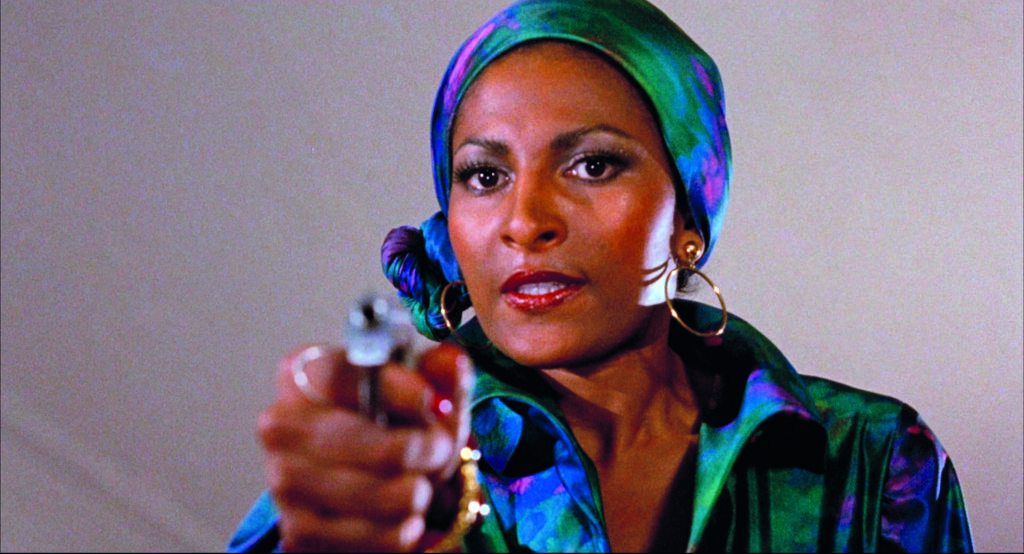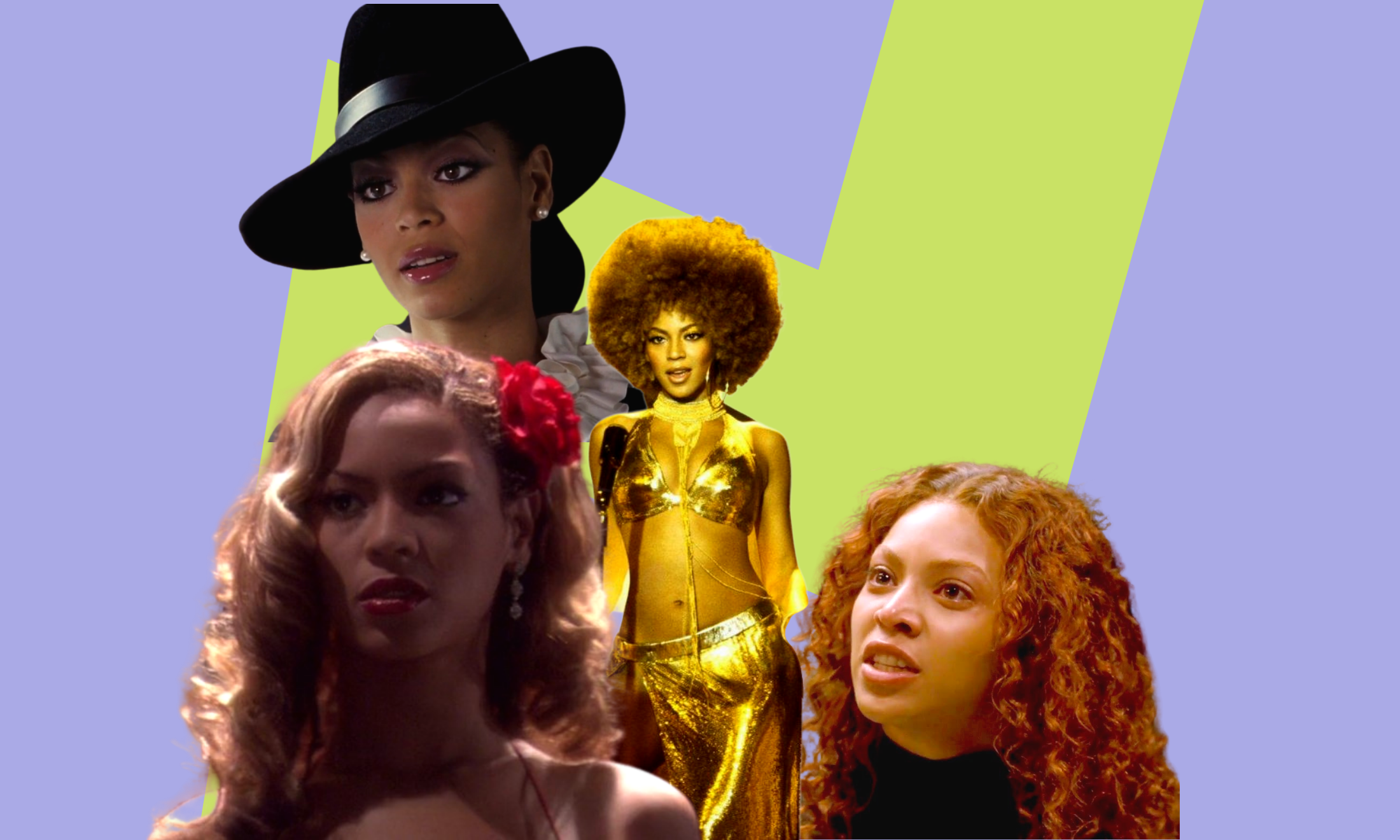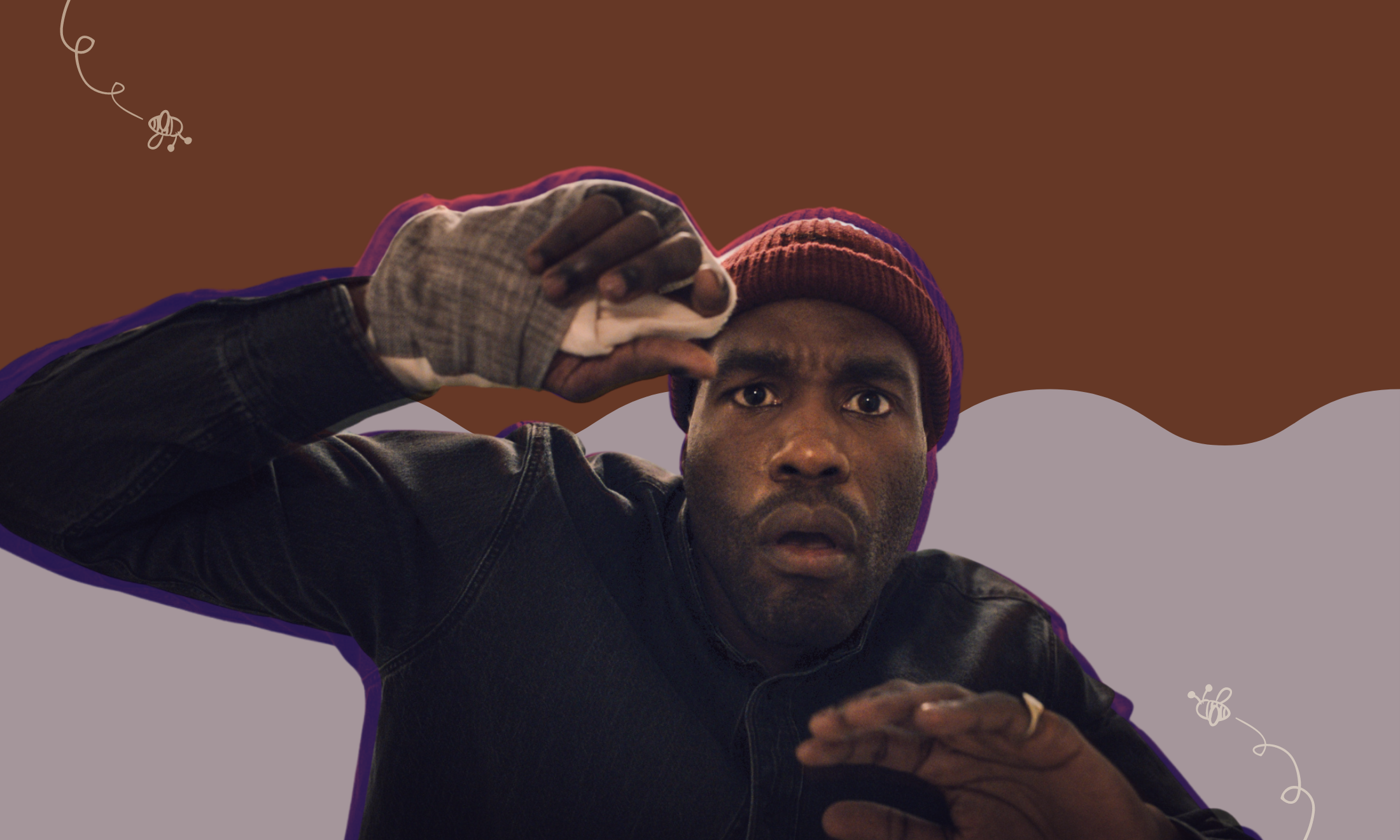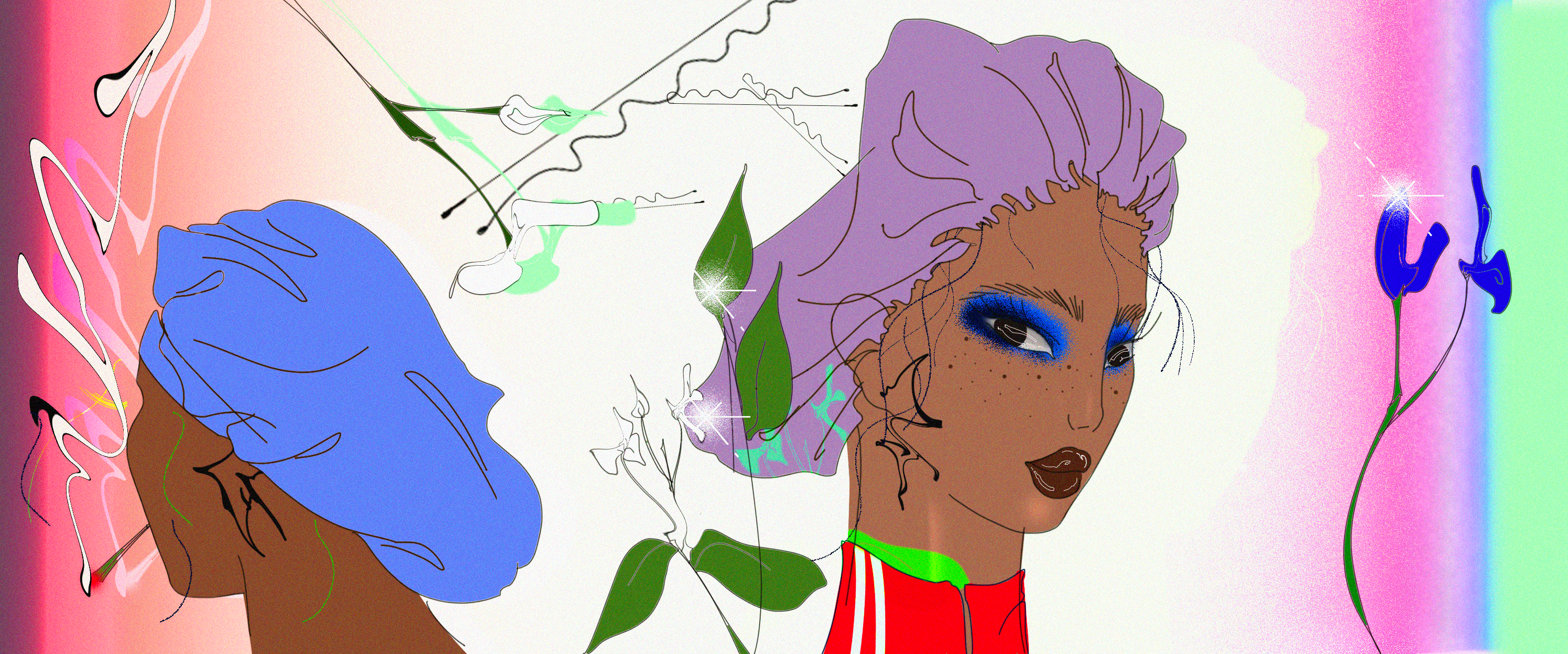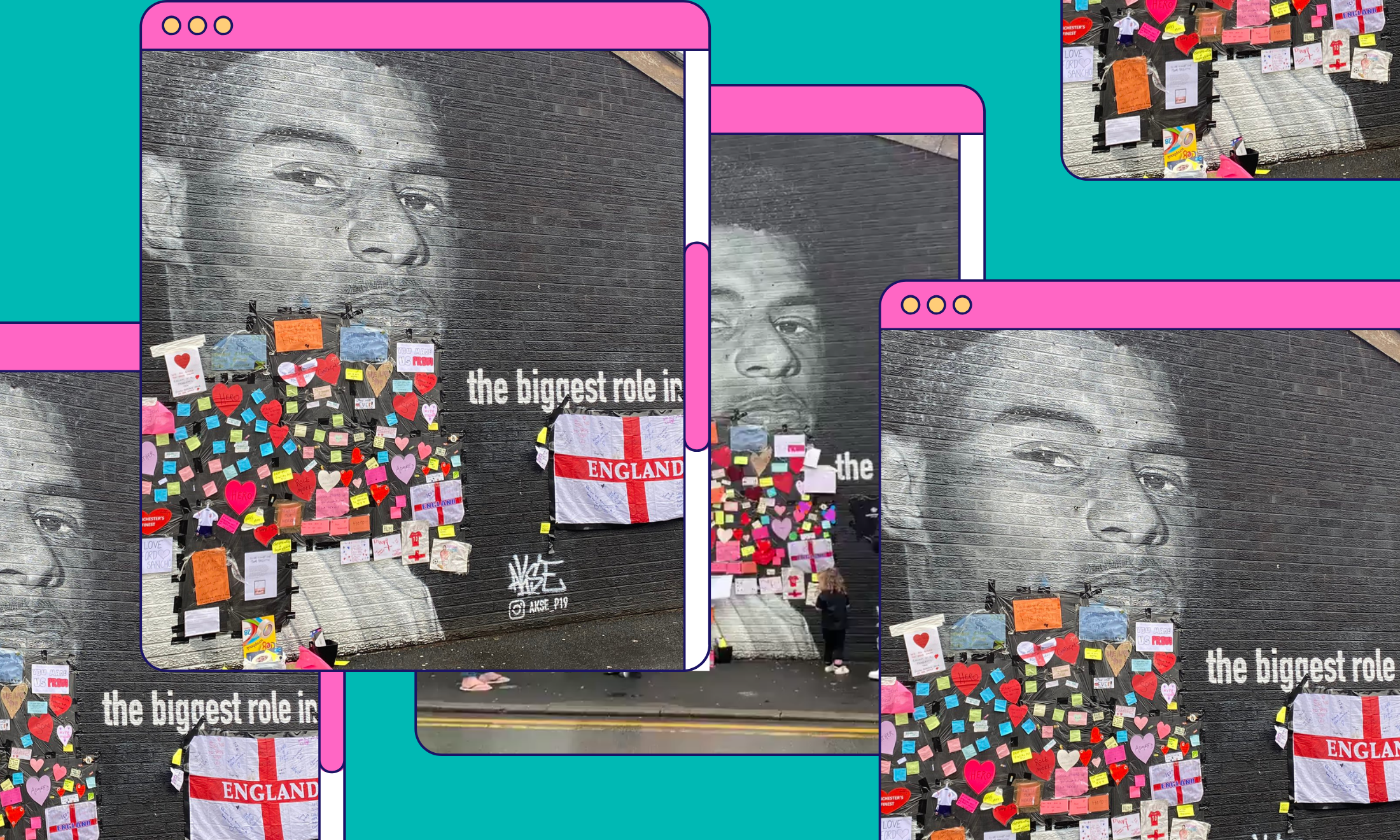
Courtesy of the BFI
Pam Grier on grit, becoming an action woman and taking back power
As Jackie Brown turns 25 and the BFI celebrates her on-screen legacy, we caught up with a blaxploitation icon who is just as fiery as her genre-defining performances.
Kemi Alemoru
03 Oct 2022
TW: mentions of sexual assault and discriminatory language.
Pam Grier is basically a synonym for power. For decades, she has etched her name into cinematic canon via an array of gritty portrayals of dynamic and stylish women. She’s been an action hero kicking ass in titles like Foxy Brown, a buxom blaxploitation poster girl who bares all in Coffy and an advocate for LGBT causes after playing Kit Porter in The L Word. Her characters are fearless, defiant, and wily. She’s drawn to protagonists with a strong moral compass, who don’t fear their sexuality, eschew oppressive gender roles, and don’t shy away from their blackness. You’re not supposed to believe everything you see on screen, but when it comes to real life, the 73-year-old emanates similar tenacity.
Throughout our conversation sat around a table in an east London office, Grier is as animated as you’d expect from a pioneering Black woman who first established herself via such kinetic roles. “I didn’t have a stuntwoman, I studied martial arts on military bases – Karate, Kung Fu. I learned the moves and they hadn’t seen that. I was running, jumping, fighting, and driving cars. All without a sports bra,” she says before laughing. Grier conducts herself similarly at home as she mostly spends her time looking after horses on her remote ranch in Colorado. “People always ask me where I get my energy from.”
As a girl who was born to a nurse mother and military mechanic father, Grier’s tough attitude comes from the harsh landscapes she inhabited. She was born in North Carolina, spent some time in Swindon, UK, and then settled in Denver, Colorado. After the Vietnam war, she says she witnessed how rural women whose husbands didn’t return had “to do everything”. “I saw independent women who cut wood, dug out wells, went fishing and hunting,” she says.
Upon the re-release of Jackie Brown to mark its 25th anniversary, BFI launched the ‘Pam Grier: Foxy, Fierce and Fearless’ season which includes screenings and live talks to honour her and reflect on the entirety of her impressive career. Grier tells a room full of adoring fans that when she decided she wanted to make movies, she left for a film school in LA with $33 to her name, wearing Timberland boots, Levi’s, a hunting vest, and her afro. She drove her family’s honey jeep which had “no roof, no windshield, no doors and buckshot holes in the side of it”. She was stopped by police who thought she was Angela Davis. Grier was immediately enamoured by the urban setting: “It was art, politics, music and the fights won by civil rights. Whites seeing James Brown and not being called a “n*gger lover” and Blacks could see country. It was a cross contamination of expression that was so refreshing and not conservative.” She had decided that to support herself she would offer vocals for musicians and by the end of her first week in the city she was singing background on Bobby Womack’s tracks. The musician then quickly introduced her to singer-songwriters Minnie Riperton and Denice Williams among other legends in the industry at the time. “Jimi Hendrix was going to jam with Sly (and the Family Stone), they asked me to come in and sing and I’m just a mess. This is my first week in Los Angeles!” she adds.
This charming anecdote of her start in the entertainment industry illustrates how Grier found herself at the epicenter of a Black cultural movement. Although she was not nominated for an Oscar like her co-star Robert Forster, the 90s hit relaunched her career as a leading woman on-screen two decades after her debut. Jackie Brown follows the titular character as she navigates her unfortunate circumstances. She has a long history of being trampled on; Jackie was jailed because her ex-husband threw her under the bus, which damaged her career prospects. She then has to supplement her dismal wage on America’s worst airline by helping gangsters smuggle cash from Mexico for a gun dealer in Los Angeles. When she gets caught by the authorities who want her to help bring her criminal bosses down, she hatches a plan to double cross both parties and take the money for herself. “It is the acknowledgment of women’s power and critical thinking. She lost everything and kept starting over. She got tired of not being the captain, the director of her own life,” explains Grier.
“In order to take power and control, we have to think. We have to pull the rug out from hypocrisy.”
Many see Jackie Brown as one of Quentin Tarantino’s smartest movies. “Every time I see it I see something different,” Grier tells me. Parking his regular over-the-top gore, this slow-burning heist movie is an exhibition of restraint. It’s a textured tale with intriguing character development and also a love letter to blaxploitation via a funk and soul soundtrack and one of the genre’s most recognisable faces.
But, it almost didn’t happen. The story goes that Grier had been invited to Tarantino’s office to audition for Pulp Fiction, but was beaten to the punch by Rosanna Arquette. She notes that she saw posters of herself on his walls which suggested that he was somewhat of a super fan. There are also hints of his love of the actress in the dialogue of Reservoir Dogs as characters talk about hot Black leading ladies from cult action hits and mention her name. Afterwards, he adapted Elmore Leonard’s novel Rum Punch to create a new film with Grier at the centre, switching the ethnicity from white to Black and renaming Jackie Burke to Jackie Brown in reference to Grier’s role in Foxy Brown.
Grier says she wants the enduring legacy of the film to be that people remember to take back power. “Liberals, African Americans, gay, [marginalised] genders. In order to take power and control, we have to think. We have to pull the rug out from hypocrisy,” she says.
It’s this burning passion that makes Grier a challenging interviewee. Sometimes you worry a celebrity won’t say much or give you enough insight into them in order to paint a picture of them as a character. When Grier engages you in conversation she’s ready to hand you a brush, and paints in every Pantone shade. You won’t leave the room without knowing what she values, what she’s been through, and how she sees the world. Not every answer fits the question. But every answer eventually sheds light on parallels between her career, her own observations from a fascinating life, and her passion as a Black woman of Native American and Asian descent who sees herself as a disruptor and philanthropist ready to advocate for society’s biggest problems.
This was first apparent when we greeted each other and I made a passing comment about the Queen dying the day before the interview, and I was carried away in the tempestuous tides of Grier’s streams of consciousness for five or six minutes. She had known something was up with the Queen before the news due to women’s intuition – women often pick up on the energy that is out in the universe. This point leads her to muse about her philanthropic pursuits before jumping to her observations of how different classes live: she’s seen those who make only $15,000 a year put solar panels on their trailer, whereas Obama failed to reinstall solar panels on the White House that Ronald Raegan had removed during his presidency. “I would have put them back up,” she adds. Similar to her onscreen roles, Grier cannot be steered. Asked whether she feels the need to use her platform to publicise the issues that are important to her, she says: “I do now.”
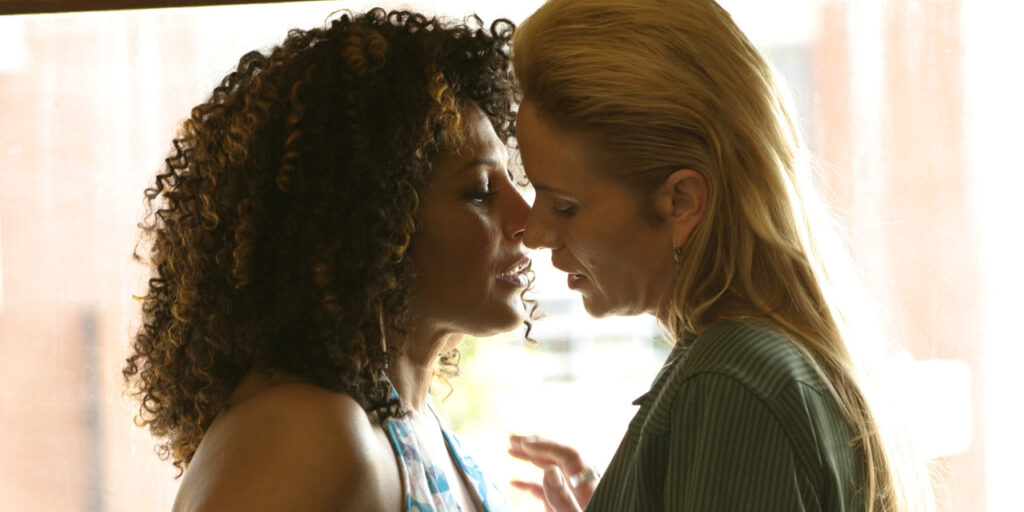
You could argue her job as an entertainer has been a vehicle for her to become a political firebrand who has used cinema as an outlet for her radical worldview and also to tell stories from marginalised perspectives. It’s fitting therefore that Grier cut her teeth as an actress in the blaxploitation and sexploitation era – both genres found themselves firmly on the outside of what was acceptable in mainstream cinema.
Sexploitation films had grown in popularity from the 50s to the 70s when a series of supreme court rulings made it possible to show nudity within film. The Big Doll House and Women in Cages focuses on girls busting out of the prison system using their sexuality and cunning. Meanwhile, the blaxploitation movement grew out of shifting race relations in the 70s. They rebooted the popular genres of the day, from horror to westerns, but exhibited Black characters as the protagonists rather than as sidekicks, servants, threats, or victims. Often these films showed social issues facing communities at the time and weaved in the themes and aesthetics of Black liberation – in Foxy Brown she uses her afro as storage for a gun and enlists the help of the Black Panthers to take down white drug barons. There’s usually a score to settle or revenge to wreak against predatory dealers, gangsters, pimps, and “cracker” cops similar to titles like Black Mama, White Mama, Coffy, and Sheba, Baby.
There are echoes of Grier’s portrayal of these characters across pop culture, as the etymology for the stage name of 90s rap icon Foxy Brown, Beyoncé’s characterization of Foxxy Cleopatra in Austin Powers: Goldmember, and more recently the style of Alice starring Keke Palmer. Even Michael Cera’s nerdy dancing silhouette at the beginning of Superbad is an interpolation of the psychedelic visuals of Grier from Foxy Brown’s opening credits.
“Jimi Hendrix was going to jam with Sly (and the Family Stone), they asked me to come in and sing and I’m just a mess. This is my first week in Los Angeles!”
In a number of her films, Grier would bare her body, distracting hopeless men and wielding her sexual power over her enemies. “I wanted society to see Black women as owning their sexuality. Isn’t that a part of my humanity?” she asks. “You don’t own a woman’s body. You don’t tell the woman how she uses her body which has been oppressed and controlled.” This is a personal mission of hers she says, as a survivor of rape at age six and again in college. She’s developed a fierce criticism of misogyny and other forms of control, including organised religion and white supremacy.
Autonomy is a prevailing theme in her work. In one of the most powerful scenes in her career as Kit Porter in The L Word, Grier depicts a woman who is trying to terminate her pregnancy but gets lured into a pro-life crisis pregnancy centre that offers her an ultrasound to deter her from the procedure. It’s one of the only scenes in mainstream TV that looks at not just the conflicting emotions around people seeking abortions but also the traumatic tactics used against them by fundamentalists in the US. Fittingly, Grier passionately segways into talking about the assault on Roe V Wade and then highlights the hypocrisy of the pro-life movement in a country that has systematically shown it does not value life, especially not the lives of ethnic minorities. “The Sand Creek massacre happened just behind my house. They killed Native American women and children and tore out unborn babies. They didn’t care about African slaves and killing those women and their babies. Now we have to listen to ‘oh babies should survive’. Let’s sit and think about all of that.”
Grier plans to continue breaking boundaries on screen with a host of upcoming projects with Universal Studios, including a series on her own life story. She praises filmmaking peers like Jordan Peele for continuing on the cinematic legacy of the blaxploitation era – particularly in films actually written and directed by Black creators, which many of the genre’s top billings weren’t. “He revisited my films like Quentin did and found a niche in the horror genre. Black people had not been in a position to envisage another horror villain other than the clan, cross burning, and white supremacy. We didn’t have the freedom to think about not having that and now we have the freedom of [making Nope about] spaceships and aliens,” she says.
As a rural-dwelling black woman, who cares for animals like the family in the film, she loved the concept and says she can’t wait to show the film to the horses on her ranch (they recently enjoyed watching the Oscars with her). “Universal contacted me and everybody said: ‘you’re going to be in the sequel’ and they said ‘what’s the sequel going to be about’ and I said it’s all about the aliens who are stranded here reaching out to a Black rural family trying to go back. The aliens are mistaken as villains which replicates the constant profiling of Black people. That would be the sequel.”
After her elevator pitch and possible revelation of a Nope sequel, Grier is led from the office to a taxi to go to another interview. We’ve spoken about so many topics and schools of thought in such a short space of time that I’m left feeling equal parts inspired and exhausted. Since the 70s she has thrilled and excited audiences and sparked thought on how society beats women down and what it looks like to tear up the order and I’ve just witnessed it in real-time. She has always been and will forever be a powerhouse.
